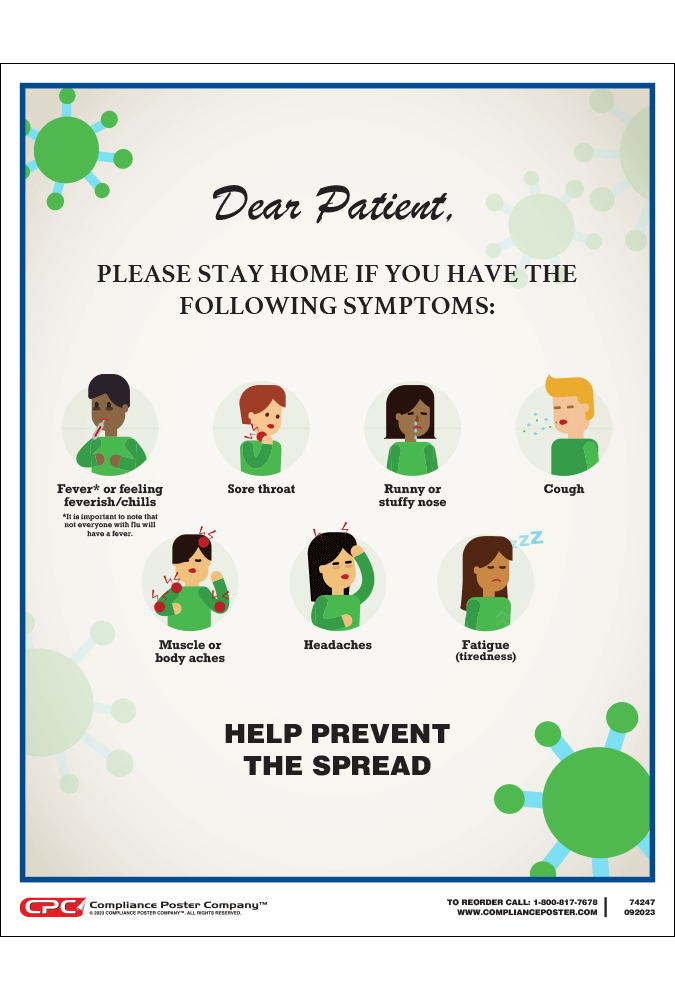Encouraging patients to stay away from dental offices or other healthcare facilities when they are sick promotes a healthy environment. Unfortunately, individuals who have symptoms of an illness do not always know when they should stay home. Early signs and symptoms of a flu-like illness and the severity of one’s symptoms are often the best indicators for staying home. Posting signs in the lobby can help individuals know – if you are sick stay away – especially when they are most contagious.
Be sure to remind patients who are sick to reschedule their appointment.
Common Sickness Symptoms
The most common symptoms of the flu are:
- Rapid onset
- Fever or feeling feverish/chills (not everyone will the flu will have a fever)
- Cough
- Sore throat
- Runny or stuffy nose
- Muscle or body aches
- Headaches
- Fatigue (tiredness)
- Vomiting and diarrhea, more common in children than adults.
The most common symptoms of a cold are:
- Gradual onset
- Sneezing
- Stuffy nose
- Sore throat
- Chest discomfort, cough
When to Stay Home
The CDC (Centers for Disease Control and Prevention) recommends staying home for anyone with flu-like symptoms, particularly a fever. A fever is a clear sign of an infection and contagion. Individuals with the flu are contagious 1 day before symptoms develop and up to 5 to 7 days after becoming sick. The CDC suggests staying home for at least 24 hours after the fever is gone without the help of fever-reducing medication. Most people who get the flu will recover in a few days to less than two weeks.
Although flu symptoms are often more severe that the common cold, individuals with either condition risk spreading their illness to others. An individual with cold symptoms can spread the illness to someone else especially during the first 2 to 3 days. Most people recover from a cold within about 7-10 days.
A strict stay-at-home policy is especially important for individuals who come into contact with vulnerable people, such as people 65 years and older, people of any age with certain chronic medical conditions (such as asthma, diabetes, or heart disease), pregnant women, and young children.


